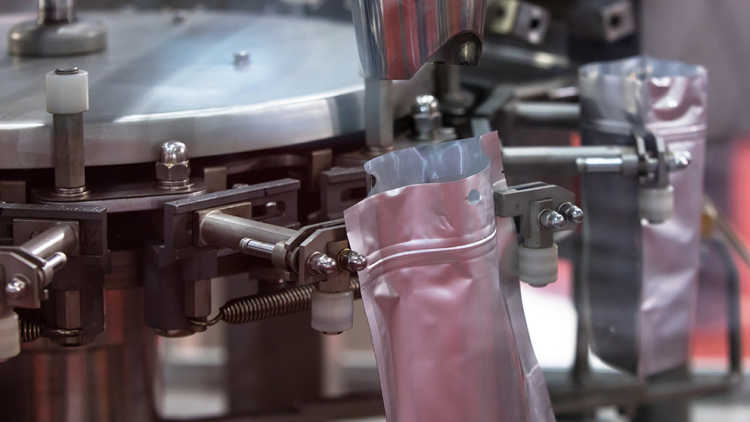Have a great product idea? Learn from these farmers who found retail success

Farmers may find themselves daydreaming about taking an idea for a value-added product and scaling up into a full-fledged side business. However, moving from idea to launch takes hard work, determination, understanding the end-user – and maybe even a little luck.
Seize the opportunity
Colin Rosengren, Ron Emde and Dan Vandenhurk — the Three Farmers — started selling their camelina oil at farmers’ markets in Saskatchewan.
Today, after 13 years in business, the company sells its camelina oil, chickpea, pea and lentil snacks Canada-wide and is run by Vandenhurk’s two daughters, Natasha and Elysia. The founding farmers are on the board of directors.
For Natasha Vandenhurk, the company gave her a challenge straight out of economics school at the University of Saskatchewan.
She quickly realized that to advance the business, she needed someone to speak to the product’s health benefits. That’s when she enlisted her sister, Elysia, a Red Seal chef.
Learn to delegate
The sisters eventually found themselves faced with difficult business decisions, including what they were willing to delegate to move the business forward.
Have a laser focus on your business plan and be willing to trust the people around you.
“It’s not feasible to get to where you want to be 100 per cent by yourself,” Vandenhurk says. “Being able to say yes to investors, as we have, is difficult, but necessary to scale up any kind of agri-food business. The market is too competitive to navigate alone.”
With a company that now competes against all the biggest players in Canada’s snack food market, Vandenhurk knows it’s not just luck or simply the result of a tasty treat.
“Be prepared to fail many times,” Vandenhurk says. “Learn from mistakes and use that as motivation to succeed.”
“You have to have laser focus with your business plan,” she says. “Not only that, but you also have to be willing to trust the people around you.
Build strategic partnerships
Vandenhurk also took deliberate steps to save money where she could. For instance, she partnered with Prairie Berries, a Saskatoon berry handling facility, to share their manufacturing space and employees for roasting Three Farmers’ snacks.
It’s important to find vertical integration opportunities with any business – ways to scale up and diversify - and stay efficient.
Fill a need
Colleen Dyck began GORP, her natural energy bar company, largely out of frustration.
The farmer and mother of four was training for a triathlon in 2013 and needed quick energy to refuel post-workout. Disappointed with the bars available on store shelves, Dyck began to experiment and make them herself.
She quickly found a receptive audience with family and friends, which gave her the idea that perhaps the bars, later branded GORP — good ol’ raisins and peanuts — could go commercial.
As Dyck tinkered with recipes, she simultaneously did research and development, figuring out how to create a shelf-stable product and how supply chains operate.
Know your target market
Dyck encourages anyone to gain a deep understanding of the market they want to tap into.
Her path to market with the energy bars included a period of free distribution at fun runs and local marathons to spread the word about GORP. Sales soared when she sold bars to some of Canada’s professional hockey and football teams, which Dyck said kept her focused on why she got into the energy bar business in the first place.
“Our ‘why’ is consumer-focused,” she explains.
Stay true to your intent
However, she points out that success can change your thinking. Dyck admits that she was lured and burned by flashy deals with major stores and distributors.
Expanding sales to major retailers and, in turn, increasing production seemed like the next natural step for GORP, Dyck says, but then the global pandemic hit.
GORP underwent a re-think after COVID-19 hit since many national distribution deals disappeared. Now, Dyck focuses solely on online sales and direct-to-consumer, and a few local grocery stores. While overall sales have decreased, profitability has risen, which is key in a volume-based agri-food business.
Creating connections
GORP now focuses on connecting with customers and helping them recreate connections with their friends and family. Customers can send a box of bars as a gift, and GORP’s social media giveaway posts focus on followers tagging friends, building an emotional attachment.
“You pull your brand into the emotion that’s felt in that moment, and you’re more than a brand,” Dyck says.
Bottom line
Adding a side product to a farm operation takes hard work, determination and understanding the end-user, say two industry experts. They recommend knowing when to delegate, keeping a strong focus on a business plan, forming strategic partnerships and being prepared to fail – yet learning from the mistakes and using those lessons to propel the business idea forward.
Article by: Trevor Bacque

Get insight into how, when and why you should expand or diversify your farm operation.